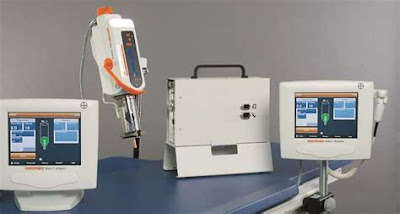Contrast media injectors are used all over the world, especially in regions such as the United States, Singapore, and Italy. Contrast media injectors are chemical that accentuates specific structures in the body. It is typically used in X-rays and fluoroscopy, as well as in computed tomography and magnetic resonance imaging scans. A physician may use a contrast dye to accentuate the magnetic properties of the body's tissues. There are many types of contrast media injectors available.
Some contrast media injectors are non-ionic while others are ionic. Ionic contrast materials have a benzene ring, which attracts positively charged iodine molecules. They are less likely to cause adverse effects, but they are more likely to cause tissue and kidney damage. In patients with renal insufficiency, diabetes, or reduced intravascular volume, the risk of kidney damage is higher. However, both types of contrast agents have some potential benefits.
The global contrast media injectors is estimated to account for US$ 2,000.7 Mn in terms of value and 49,381 units in terms of volume by the end of 2027.
There are three parameters that should be considered when developing new contrast media injectors. First, the contrast must be inert in the body. For example, the material must be highly soluble in water, while a high concentration of the drug must be injected through a syringe. Second, the contrast should be completely removed from the body. Ideally, the drug should be able to be absorbed and filtered by the blood.
Lastly, the contrast media injectors should be able to tolerate high fields and low fields. This means that the contrast agent should be more stable than its low- and medium-field counterparts. Moreover, contrast materials must be inert in the body. The new agent must be completely eliminated from the body once the scan is finished. The use of a new contrast agent may also improve the patient's experience. When a patient is sensitive to a particular drug, they should consult a doctor before the procedure.
The development of new contrast media injectors should consider three parameters. If a patient has high-field radiography, a different contrast agent is needed than low-field radiography. The high-field imaging agent must be able to be distributed throughout the body. A high-field contrast agent must be inert in the body. It must be able to dissolve in water. This should be done using a syringe.





No comments:
Post a Comment